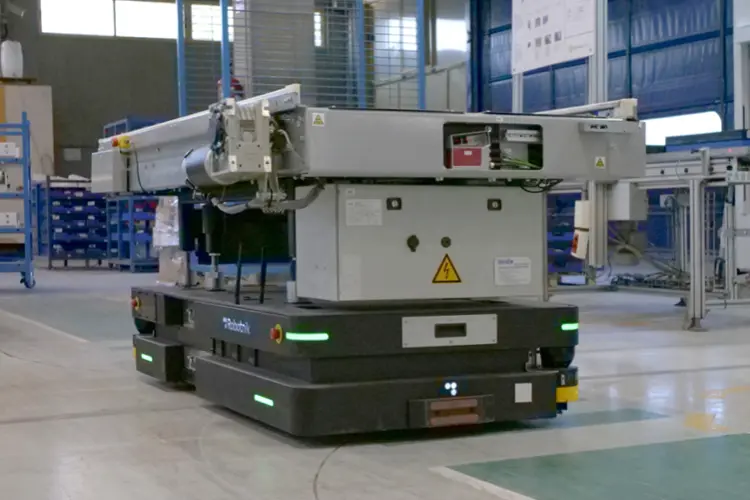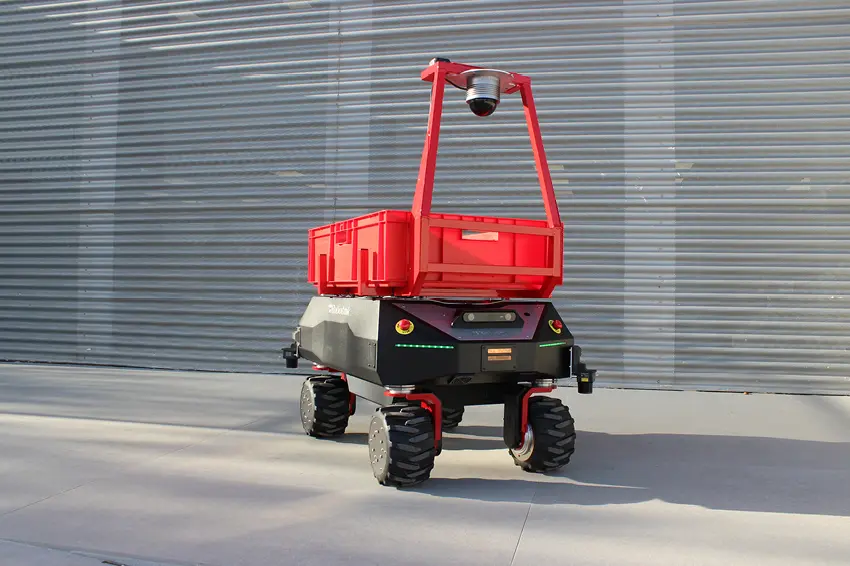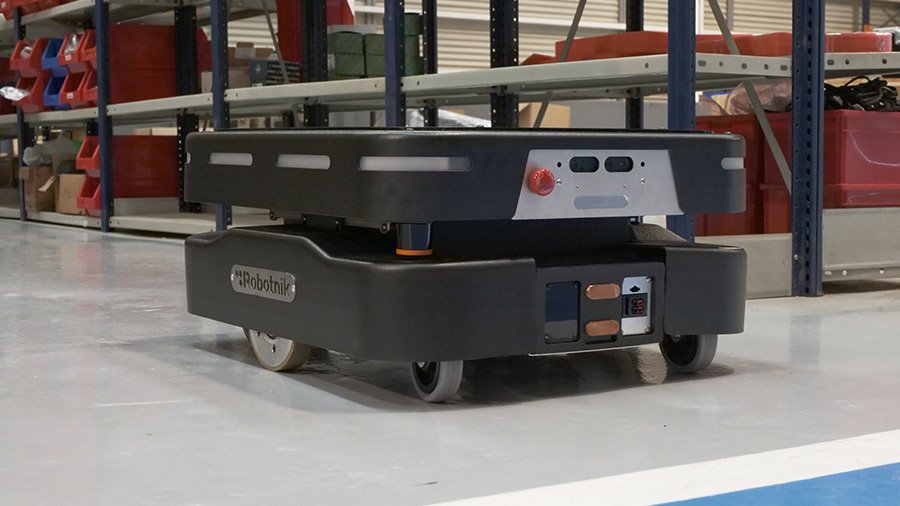
How are robots used in transportation? A transport robot is one that has been designed to move materials and products from one place to another, usually in industrial or logistics environments. However, we can also see them in hospitals, restaurants, hotels, among others.
Did you know that between 2013 and 2018, the number of logistics robots grew by 175%? It is a remarkable figure but since then, according to the IFR, the percentage is still increasing by around 30% every year.
This is an increasingly widespread solution for advanced automation for transportation. This article shows examples of robots in transportation or the types of tasks these robots perform.
TRANSPORT ROBOT OPTIONS
Not all transport robots on the market can perform transport tasks autonomously. Robotnik’s mobile robots are equipped with a range of safety lasers, cameras and other sensorization, which enable them to perceive their environment and make decisions in real time; or navigation systems such as positioning systems (GPS) that allow them to move autonomously and find their way in a complex environment. Depending on their level of autonomy and other technical characteristics, they will be able to execute a more basic or other more complex type of transportation tasks. Here are some examples:
- Mobile Manipulators, trained both to transport loads autonomously and to manipulate materials, in a space shared with humans. They are especially useful for tasks that require precision and repetition, such as workpiece placement on an assembly line. They are the robots that have the ability to perform the most complex tasks in the most intelligent way.
- Autonomous mobile platforms: these are the AMRs that automate the transport of goods in an intelligent way. In Robotnik's portfolio,you can find indoor and outdoor transport robots. Also with different load capacities: from 50 Kg of the RB-1 BASE to 1Tn of the RB-ROBOUT.
APPLICATIONS OF AUTONOMOUS TRANSPORT ROBOTS
Currently, robotic technology is making its way into different fields and the transportation vertical is no exception. The implementation of robots in transportation has enabled advanced automation for different industries such as automotive, food, electronics or manufacturing industries, achieving greater efficiency and optimization in transportation and product delivery processes.
Robots in transportation such as RB-THERON are used in logistics for various tasks, such as transporting goods within storage facilities, loading and unloading trucks, carrying parts and components to different areas of a production line or products from a distribution center, and even for package delivery in urban environments. In addition, as explained in the previous section, depending on the level of development of the robot, it will be able to carry out more complex transport tasks or tasks that require greater precision, such as handling objects or sorting products.
These tasks can help improve efficiency and safety in logistics by reducing downtime, increasing accuracy and reducing the need for human workers to perform repetitive and physically demanding tasks.
An example of how effective of autonomous transport of goods in logistics is the ecommerce sector. An increasing number of orders with different sizes, weights and 24-hour deliveries need to be managed. The preparation of these orders has increased the demands of logistics processes and today’s mobile robotics, flexible, versatile and adaptable, has become the perfect tool.
WHICH TRANSPORT ROBOT BEST SUITS YOUR NEEDS?
The autonomous transportation efficiency has enabled advanced automation for the sector, achieving greater optimization in the logistics processes of transportation. Depending on the needs of your business, you may require a different transport robot.
- Up to 50 kg payloads: RB-1 BASE
- Up to 200 kg payloads: RB-THERON
- Up to 1,000 kg payloads: RB-ROBOUT
- Transport of loads in indoor and outdoor environments: SUMMIT-XL, RB-VOGUI
CONCLUDING
In conclusion, the return on investment of transport robots has been proven over the years. They are useful and efficient tools that offer a number of benefits in industrial and commercial environments. In addition, their ability to work long hours without a break makes them an ideal solution for high production, efficient management of logistics and transportation of materials.




